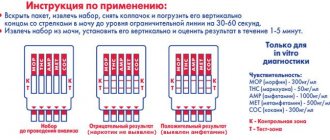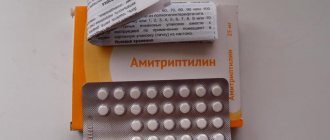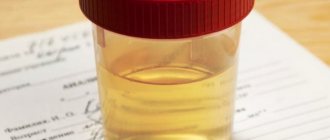Laboratory testing of urine not only allows us to draw conclusions about a person’s health status, but also determine whether he has any chemical dependence or not, for example, from drugs. After how many days can the breakdown products of narcotic substances be detected in urine? What types of tests exist, and how to speed up the elimination of toxic metabolites? More on this later in the article.
- Read in the article:
- How to test urine for drugs
- How long does the drug stay in urine?
- How long does THC last in urine?
- How long does the test show morphine in urine?
- Drug metabolites
- How long do opiates last in urine?
- Barbiturates in urine
- How long do benzodiazepines last?
- What drugs can be found in urine
- Types of Urine Drug Tests
- Urine analysis for surfactants
- Urine cannabinoid test
- Chemical analysis of urine
- HTI analysis
- Rapid urine test strip test
- Urine heroin test
- How to use a pharmacy drug test
- Drug test results
- What affects the rate of elimination
- Time to detect drugs in urine
- When is a drug test needed?
- How to speed up the elimination of drugs?
- Detoxifying the body from drugs
Treatment prices:
| Sign up for a free and anonymous consultation with a narcologist | 0 ₽ |
| Initial consultation with a narcologist | for free |
| Consultation with a psychologist in person or Skype | 3 000 ₽ |
| Psychiatrist consultation | 5 000 ₽ |
| Psychodiagnostics / pathological diagnostics | 7 500 ₽ |
| Narcopsychotherapy | 50 000 ₽ |
| Consultation with a psychologist and selection of a treatment and rehabilitation program for an addict | for free |
| Intervention session | 12 000 ₽ |
| Social rehabilitation of alcohol addicts | for free |
| Outpatient rehabilitation in Moscow | 33 000 ₽ |
| Standard rehabilitation program | 40 000 ₽ |
| Intensive rehabilitation program | 80 000 ₽ |
| Premium rehabilitation program | 120 000 ₽ |
| Medical and social rehabilitation (21 days) | 150 000 ₽ |
| Rehabilitation Spain, Bulgaria | 200 000 ₽ |
| VIP rehabilitation program | 350 000 ₽ |
| Online addiction rehabilitation course | 28 000 ₽ |
| Rehabilitation of age-related alcohol addicts | 50 000 ₽ |
| Rehabilitation of drug addicts | 60 000 ₽ |
| Adolescent social-psychological-pedagogical rehabilitation | 70 000 ₽ |
| Psychotherapy | 5 000 ₽ |
| Family psychotherapy | 6 000 ₽ |
| Support groups for loved ones of addicts | for free |
| Webinars for relatives of addicts | for free |
| School for codependents | 3 000 ₽ |
| Transfer support | negotiable |
| Motivation for treatment | 6 000 ₽ |
| Escort to the clinic | 6 000 ₽ |
| Testing (urine/blood/hair) | specify |
Expand
Still have questions? Call us!
8
Free consultation and appointment
How long does the drug stay in urine?
The length of time the drug is present depends on several factors. For example, the concentration is affected by the type of drug, duration of use, dosage, and experience of the drug addict. Abuse of alcohol or other psychoactive substances (PAS) can also affect this indicator.
How long does THC last in urine?
THC (tetrahydrocannabinol) after a series of metabolic reactions is deposited in adipose tissue and is therefore excreted slowly. Approximately half of the drug leaves the body in the first 3 days after consuming THC, with the remainder leaving the body within several months. Therefore, tetrahydrocannabinol can be detected in urine for a long time.
How long does the test show morphine in urine?
The result of a drug test for morphine can be obtained within 3-4 days after a single use of the drug - this is exactly the time it takes to cleanse the body of it. Otherwise, the detection period increases.

Drug metabolites
Once a drug enters the body, regardless of its type, it undergoes a series of chemical transformations, resulting in the formation of metabolites. They can accumulate in any tissues and organs (for example, in fat) or are excreted completely, mainly through the urinary system. Based on their concentration in urine, the doctor makes a conclusion about the absence or presence of drug addiction. How long the metabolites of narcotic compounds remain in the urine depends on the type of drug, duration of use and other factors.
How long do opiates last in urine?
A drug test in urine for the content of opiates (for example, codeine) is the most reliable method of detecting them in the body. The analysis will be positive within three days with a single dose of opium and within a week (sometimes more) with regular use.

Barbiturates in urine
The same as in the previous case: if the use of barbiturates was episodic, the drug can be detected in the urine within three days. Systematic abuse will lead to their accumulation, and the test result will be positive even a week after the last dose.
How long do benzodiazepines last?
The results of a urine test for the presence of benzodiazepines depend on the active ingredient of the drug. Medicines in this group are divided into drugs with rapid, medium and prolonged action. Metabolites of the first are detected in urine within 24 hours after administration, the second - up to 3-4 days, the third - within a week. If we are talking about systematic use, toxic compounds can be identified within several weeks.
Formation of addiction
Accustoming to opium occurs quickly. A few injections are enough to form pathological cravings. With systematic opium smoking, addiction develops within a few weeks.
The syndrome of emerging dependence is characterized by a syndrome of changes in reactivity. It manifests itself in the form of a change in tolerance, that is, an increase in the dose of the drug and an increase in its tolerance. At the height of opioid dependence, tolerance exceeds the initial physiological one by 100–300 times.
Introduction to drug science / M.I. Leshikhin, A.N. Romanova, E.A. Romanova - Chelyabinsk, - 2015. - 52 - 63 p.
The disappearance of protective reactions in response to drug administration (nausea, vomiting) also refers to a change in reactivity. After this, the main drug addiction syndrome appears, which combines mental and physical cravings.
Clinical picture of the three main drug addiction syndromes:
- Tolerance – the body adapts to the drug. The severity of the reaction to the administration of the same amount is reduced. A higher dose is required to achieve the same toxic effect.
- Mental craving - there is a pathological desire to continuously take a drug in order to achieve a toxic effect, or to relieve emotional discomfort. Mental dependence when using opium can develop after a single dose. Mental discomfort contributes to the transition to systematic use.
- Physical craving – occurs with systematic drug use. The functionality of the body is restructured under the influence of opium. Therefore, when quitting a drug, mental and somatic disorders occur—withdrawal syndrome.
The main syndromes characterize the first two stages in the development of drug addiction. The third stage of drug addiction occurs with the development of severe somatic pathologies and complete degradation.
Types of Urine Drug Tests
Urine tests for drug addiction can be of different types.
Urine analysis for surfactants
This type of research makes it possible to identify facts of psychoactive substance use. The result can be obtained within a few hours. This test is not suitable for detecting dependence on more complex compounds (vint, tropicamide), but it is quite possible to determine the drug salt in the urine using the test.
Treatment calculator
Field score:
Total score:
Patient age
Length of use
What he uses Has he previously undergone treatment Consent to treatment Concomitant diseases Employment
Waiting for values to be entered
Urine cannabinoid test
Cannabinoid metabolites (cannabinol derivatives) remain in the urine for a week after the last use of the herb, so identifying them is quite simple using rapid methods. Regular use of marijuana or Khimka leads to the accumulation of toxic metabolic products - in this case, analysis can show their presence for a month or more.
Chemical analysis of urine
With the help of a chemical urine test, the doctor gets a detailed picture of the situation - in some cases, the test shows not only the amount of the drug taken, but also the time of its use. This is the most effective and reliable method for identifying addiction. Often used in forensic medicine.
HTI analysis
CTI analysis is a chemical and toxicological study based on the immunochromatography method. When carrying out the analysis, special test strips are used. CTI allows you to detect up to 10 types of drugs in urine at once, as well as identify the fact of alcohol abuse.

Rapid urine test strip test
Using test strips, you can perform a rapid urine drug test even at home. Among their advantages:
- possibility of simultaneous determination of up to 10 types of narcotic compounds;
- ease of use;
- quick results;
- affordable price;
- reliability of the data obtained.
The test strips do not determine the use of spice and designer mixtures, antidepressant drugs, and psychotropic compounds.
If drugs are found in the urine during a rapid test, the next action will be to order a confirmatory test.

Urine heroin test
A pharmacy test to detect drug content in the body clearly shows the presence of heroin. The substance is detected within 2-4 days after the last dose, even in the case of a single use.
Saliva analysis
Before donating saliva for research, biomaterial is collected. A special plastic or glass container is used. 10 ml of saliva is enough for the study. If necessary, centrifugation is carried out (for example, if there is visible sediment or turbidity in the biomaterial).
Immunochromatographic analysis. This is a rapid study that is carried out using tests. The active substance is moistened with saliva, after which the result is displayed within 3-5 minutes. Immunochromatographic analysis reveals the use of:
- hashish,
- marijuana,
- amphetamine,
- methamphetamine,
- cocaine.
Chemical-toxicological analysis. It shows the presence of drugs in saliva, provided that no more than 2-3 days have passed since their use. This research method allows you to obtain accurate and reliable results, which can be used as written evidence in court.
Research using a hardware analyzer. To detect drugs, special devices are used that quickly and accurately test saliva samples. Automated systems provide an objective assessment, but all results obtained are preliminary.
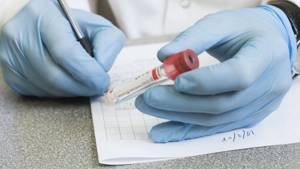
Saliva testing for drugs is carried out only in laboratory conditions: in a private or public hospital.
Drug test results
The result is displayed in the form of bars. Depending on the manufacturer, the result may be positive in the form of one or two stripes. To obtain reliable data, you must strictly follow the instructions. In addition, a false result (positive or negative) is possible for the following reasons:
- the test was stored incorrectly;
- the test has expired;
- influenced by other chemical compounds;
- low quality test and others.
For example, a false positive result for morphine can be obtained if a person consumed baked goods with poppy seeds before taking the test.

Methodology
The test strip or system must be used in strict accordance with the attached instructions.
Basic Rules:
- Urine is collected in a container made of neutral plastic or glass.
- The test is lowered into biological fluid to the limiting line.
- The strip or system is kept in the biomaterial for several seconds.
- The test is placed on a flat surface.
- The result is determined in five minutes.
- The analysis is considered complete if 1 or 2 colored stripes are clearly visible on the strip or system. If at least one colored line is missing, the study must be repeated.
What affects the rate of elimination
How quickly the drug leaves the body depends on a number of factors:
- type of drug;
- dosage;
- duration of use;
- body type, presence of adipose tissue;
- age;
- concomitant diseases, especially of the urinary system;
- accompanying addictions (alcohol, smoking).
You can add physical activity to the above - the less it is, the longer the toxins remain in the body.

Time to detect drugs in urine
Time to detect marijuana after taking the drug:
- single – 3 days;
- up to 4 times a week – 5-7 days;
- every day – 10-15 days;
- up to several times a day every day – more than a month.
After drinking alcohol (7-12 hours), drugs are detected within:
- barbiturates (fast-acting) – 24 hours;
- amphetamine – 2 days;
- heroin – 2 days;
- morphine – 2-3 days;
- cocaine – 2-4 days;
- methadone – 3 days;
- benzodiazepines (short-acting) – 3 days;
- PCP (PCP, phencyclidine) – 8 days;
- barbiturates (extended) – 21 days;
- benzodiazepines (long-acting) – 30 days.
Thus, the time during which a drug can be detected in urine depends on both the duration of use and the type of drug.

Blood analysis
A quarterly analysis is used to detect drugs in the blood. This method requires contacting a specialized laboratory, where blood is drawn (15 ml) and further examined.
The quarterly test allows you to find out whether a person has used in the last 1-4 months, as well as in what doses and how often this happened. Types of drugs in the blood that can be detected using the quarterly method:
- amphetamine,
- methamphetamine,
- cocaine,
- barbiturates,
- marijuana,
- hashish,
- opiates.
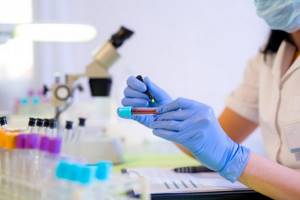
The quarterly test requires 15 ml of blood: 10 ml is used for testing and the remaining 5 ml is saved for a control sample
Find out the address of the nearest laboratory, we’ll call you back and select the necessary tests

When is a drug test needed?
Certificates of drug addiction tests (urine, blood) may be required in the following cases:
- court;
- traffic accident;
- getting a job (for example, in government agencies);
- drug addiction treatment.
A drug test may be considered if you notice strange behavior in a loved one and suspect that they are addicted.

Hair analysis
Many drugs are deposited in the hair shaft in small but detectable doses. This makes it possible to determine even a single dose of substances 2-3 months before the study. Hair drug testing has become widespread in Europe because it is highly reliable.
To carry it out, you need to take samples: from 15 to 100 hairs. Before testing, the biomaterial is treated with an organic-based solvent, which is subsequently analyzed. Methods used to determine drugs: mass spectrometry and gas chromatography.
Drugs that can be detected by hair analysis:
- heroin,
- codeine,
- morphine,
- methadone,
- M.D.A.
- MDMA
- methamphetamine,
- amphetamine,
- marijuana,
- trawl.
How to speed up the elimination of drugs?
You can independently speed up the elimination of drugs from the body in different ways, but all of them will work only if you completely stop taking them again. At home, methods such as:
- gastric lavage;
- taking sorbents;
- enemas;
- taking diuretics.
Drinking plenty of fluids is recommended. It can be plain water, mineral water, green tea, milk, fruit drinks.

Professional detoxification
If your urine shows drugs, the safest way to cleanse your system is to go to a professional drug treatment clinic for a detoxification procedure. Based on the patient’s condition, drug clinics offer the following services:
- Classic detox. Suitable for any type of addiction, except opium, it is carried out in several sessions - from 1-2 days to a week. The patient is given a drip with saline solutions and special medications that accelerate the natural withdrawal of surfactants and help cope with the consequences of withdrawal - pain, nervous disorders, insomnia.
- Accelerated opioid detoxification (AOD). Prescribed for opium addiction, when the patient cannot withstand the classic detox course due to painful withdrawal syndrome. Under anesthesia, the patient is injected with opium antagonist drugs, which cleanse the brain receptors and artificially accelerate the withdrawal process. The addict spends 5-8 hours unconscious and returns to reality without the physical need for psychoactive substances.
- Plasmapheresis and hemosorption. Physiotherapeutic procedures are prescribed for overdoses and liver and kidney failure. The patient's blood is passed through special devices that remove toxic plasma or purify the blood with a sorbent filter.
It is important to understand: detoxification is not a full-fledged drug addiction treatment, but only its first stage. Cleansing the body of narcotic compounds helps get rid of the most obvious and painful symptoms of drug addiction, but this is not enough to completely quit surfactants.
Drug addiction is a serious, progressive and complex disease that includes physical, psychological, and social factors. And its root is psychological and social problems that push the drug addict to use. Often these are childhood traumas and upbringing mistakes, low self-esteem, and the inability to cope with stressful situations without the help of “doping.”
Therefore, detoxification alone is not enough - the addict needs a comprehensive program in a drug rehabilitation center that will relieve him of psycho-emotional disorders, will take place far from his usual environment and will deprive him of access to psychoactive substances. Such conditions are offered by modern drug treatment hospitals: the patient is isolated from society, protected from the threat of relapse, undergoes daily personal and group psychotherapy sessions and consciously comes to a complete abstinence from psychotropic substances.
Detoxifying the body from drugs
To quickly remove narcotic substances, you should contact a specialized drug treatment facility. The detoxification is carried out anonymously and under the supervision of doctors. The following methods of cleansing the body are used:
- droppers;
- sorbents;
- ultra-fast opium detoxification (in difficult cases);
- hemosorption;
- plasmapheresis.
Detoxification is the first step towards recovery from drug addiction. To completely quit drugs will require a long period of treatment and rehabilitation under the guidance and supervision of experienced professionals. Don’t put off your life for later, go to a drug treatment center.
Consequences of chronic drug addiction
Chronic intoxication leads to dysfunction of the central nervous system. But opium metabolites accumulate in every cell, so systematic poisoning does not go unnoticed for any organ or system. In chronic drug addicts, the body is exhausted, so secondary pathologies develop, which often cause death.
Opium destroys nerve cells, so a degenerative process begins in the brain. An intellectual-mnestic syndrome develops, in which the use of skills and abilities becomes impossible.
Life expectancy with drug addiction
Opium addicts live no more than 5–7 years; death occurs from dysfunction of vital organs and systems. But according to statistics, death occurs much earlier from an overdose, secondary infections (HIV, hepatitis) or suicide due to psychosis.
